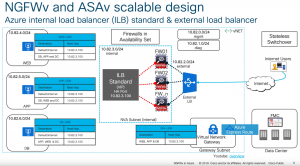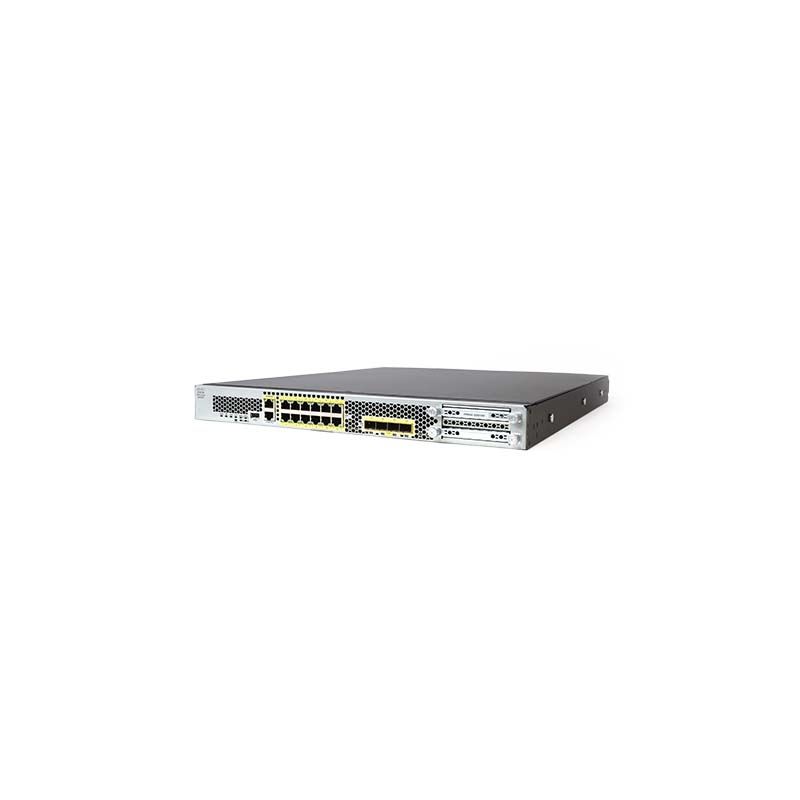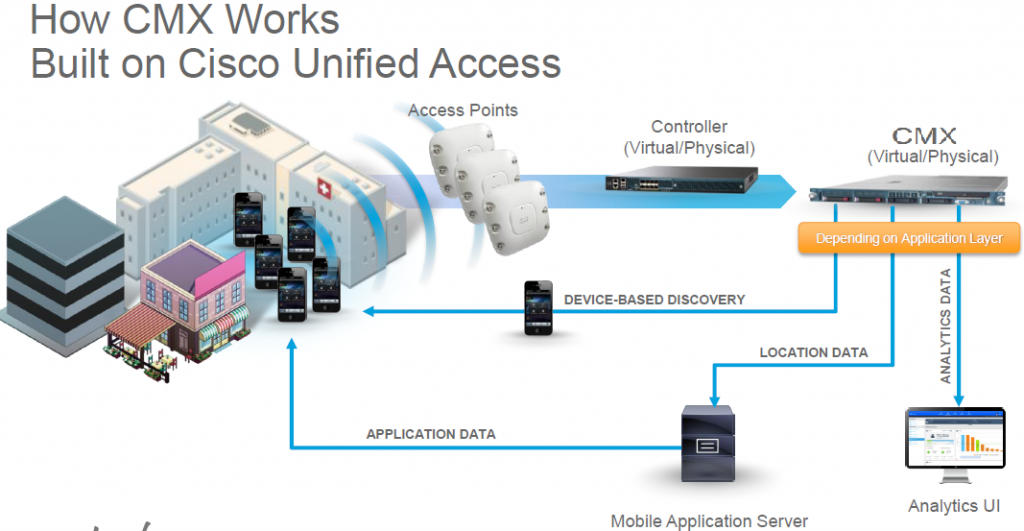
فایروال های مجازی سری VM با AWS Gateway Load Balancer ادغام می شوند
در دسترس بودن کلی ادغام میان فایروال های مجازی سری VM و Balancer Load Gateway Load Balancer (GWLB) جدید که به تازگی معرفی شده است مشتریان را با مقیاس بزرگ امنیتی و تسریع عملکرد آشنا می کند در حالی که پیچیدگی های ناخوشایندی را که به طور سنتی با قرار دادن لوازم مجازی در محیط ابری عمومی مرتبط است دور می زند . GWLB استقرار ، مقیاس گذاری و مدیریت لوازم مجازی شخص ثالث را در سرویس های وب آمازون (AWS) آسان می کند.
توانایی مقیاس گذاری زیرساخت ها در فضای ابری یکی از بزرگترین مزایای رایانش ابری است. به همین دلیل است که به عنوان مثال بسیاری از سازمان ها برنامه های مهم تجاری خود را به فضای ابری منتقل می کنند. AWS یکپارچه مقیاس پذیری الاستیک را فراهم می کند تا بتواند در استفاده از برنامه جایگزین شود در حالی که به طور همزمان اطمینان می دهد که مشتریان آن ها فقط هزینه آنچه را که استفاده می کنند پرداخت می کنند.
محافظت از این تحول ضروری است و هرچه برنامه ها و داده های مهم تجاری به AWS منتقل می شوند نیاز به افزایش امنیت شبکه عمومی بومی با محافظت از تهدیدات نسل بعدی به طور قابل توجهی افزایش یافته است. هر روزه هزاران شغل برای محافظت از محیط AWS خود از فایروال های مجازی نسل بعدی سری VM استفاده می کنند. با این حال پیچیدگی های قرار دادن لوازم مجازی در فضای ابری ممکن است گاهی اوقات برای پیمایش چالش برانگیز باشد و مقیاس گذاری موثر امنیت شبکه و محافظت از تهدید را محدود می کند.
برای مطالعه درباره فایروال سیسکو کلیک کنید
سه قابلیتی که کمک می کند تا امنیت فضای ابری موثرتر شود :
با استفاده از این ادغام بین فایروال و GWLB ، مشتریان سری VM می توانند از ساختارهای بومی شبکه AWS برای مقیاس بندی یکپارچه فایروال های خود و افزایش عملکرد استفاده کنند. مزایای این ادغام در سه نکته اصلی زیر خلاصه می شود.
اتصال ساده شده
به راحتی اتصالات سری VM را در مسیرهای خروجی ، شرقی-غربی و ورودی برنامه های خود وارد کنید. سری های VM و GWLB سرصفحه ها و محموله های ترافیکی شما را دست نخورده نگه می دارند و از این طریق قابلیت دید کامل هویت منبع را برای برنامه های شما فراهم می کنند.
عملکرد در مقیاس
مقیاس ترافیک خود را در چندین فایروال سری VM با استفاده از سازه های شبکه AWS بومی برای دستیابی به توان عملیاتی بالاتر عملیاتی کنید و دیگر نیازی به تونل های رمزگذاری شده برای بررسی ترافیک شرق غربی و برون مرزی نیست.
مقرون به صرفه
تعداد فایروال های مورد نیاز برای محافظت از محیط AWS خود و تحکیم وضعیت کلی امنیت شبکه خود را با مدیریت امنیت متمرکز کاهش دهید.
مایومی هیراماتسو معاون رئیس شبکه آمازون EC2 و خدمات وب آمازون می گوید : اجازه دادن به مشتریان برای استقرار امنیت بیشتر از طرف شرکای AWS ما در اولویت اول AWS است و ما خوشحالیم که در هنگام ساخت با Palo Alto Networks کار کردیم. AWS Gateway Load Balancer برای به شدت استقرار پشته های مقیاس پذیر افقی وسایل امنیتی مانند فایروال های سری VM آن ها را ساده می کند.
Networking & Content Delivery
Scaling network traffic inspection using AWS Gateway Load Balancer
Updated “Cross-zone load balancing and appliance failures” section on 25th March, 2021
Organizations use next-generation firewalls (NGFW) and intrusion prevention systems (IPS) as part of their defense in depth strategy. In an on-premises network, these often take the form of dedicated hardware or software or virtual “appliances.” As companies move to the cloud, they want to add virtual appliances to their AWS environments. While spinning up these appliances from the AWS Marketplace is a relatively straight forward process, architecting for high availability and scalability are not always easy. The new AWS Gateway Load Balancer (GWLB) service is designed specifically to address these architectural challenges and make deploying, scaling, and running virtual appliances easier.
Gateway Load Balancer is a new type of load balancer that operates at layer 3 of the OSI model and is built on Hyperplane, which is capable of handling several thousands of connections per second. In conjunction with a new type of VPC endpoint, referred to as a Gateway Load Balancer endpoint, Gateway Load Balancer exhibits characteristics of both a router and a load balancer. Gateway Load Balancer maintains stickiness and flow symmetry for traffic sent through it, performs health checks and allows auto scaling groups as targets. What this means for customers is that security teams and ISVs can now expose network security as a service for example, without all the heavy lifting of having to create or use complex mechanisms to manage availability and scaling of the appliance fleets they use for inspection. Customers can now focus on building out their applications and security policies without all the overhead. An additional benefit for partners and third-party appliance vendors, Gateway Load Balancer enables new ways to deliver Network Function Virtualization (NFV) solutions as a managed service.
Industry-leading partners
Because virtual appliances are intrinsically linked to the value Gateway Load Balancer provides, a number of industry-leading AWS partners worked with us during its beta testing. These companies gave us valuable feedback, and have built solutions to run behind a Gateway Load Balancer today. Here are blog posts and videos that share their experiences:
In our previous blog, How to integrate third-party firewall appliances into an AWS environment, we looked at multiple architectures for deploying or implementing firewalls running as virtual appliances. In this post, we introduce new options made possible by Gateway Load Balancer. Specifically, we show how to scale these virtual appliances horizontally with Gateway Load Balancer to inspect traffic from and to your Amazon Virtual Private Cloud (VPC). By definition, these use cases include AWS partner products that work in conjunction with VPC constructs like VPC Security Groups and network access control lists (NACLs).
In this blog, we go over the details of a distributed architecture comprising of Gateway Load Balancer and Gateway Load Balancer endpoints. Gateway Load Balancer and virtual appliances are deployed into a centralized appliance VPC. Gateway Load Balancer endpoints are configured in spoke VPCs originating or receiving traffic from the Internet. This architecture allows you to perform inline inspection of traffic from multiple spoke VPCs in a simplified and scalable fashion while still centralizing your virtual appliances.
Before we discuss building this architecture, check out the blog post from the AWS News team, Introducing AWS Gateway Load Balancer, easy deployment, scalability, and high-availability for partner appliances, to get a perspective on what Gateway Load Balancer is, and how it helps customers. For a broad introduction to the service, Introduction to AWS Gateway Load Balancer might also be of interest.
Architecture overview:

Figure 1: Distributed Architecture using Gateway Load Balancer and Gateway Load Balancer endpoints
In this architecture, Gateway Load Balancer endpoints are deployed into each Availability Zone (AZ) in the spoke VPC. The virtual appliances which can be next-generation firewalls, intrusion prevention systems etc. are deployed behind the Gateway Load Balancer in the centralized appliance VPC. This appliance VPC can be in the same AWS account as the spoke VPC or different AWS account. Virtual appliances can be configured to use auto-scaling groups and are registered automatically with the Gateway Load Balancer, allowing metric-based scaling of the security layer. These virtual appliance can be managed by accessing their management interfaces through an Internet Gateway (IGW) or using a bastion host setup in the appliance VPC.
When using interface VPC endpoints, customers use a domain name system (DNS) based mechanism to route traffic to them. With the launch of Gateway Load Balancer endpoints, customers can now set a Gateway Load Balancer endpoint as a route target in the VPC subnet route table. To route traffic to the security fleet behind the Gateway Load Balancer, you need to edit appropriate route tables of the spoke VPC to point to the Gateway Load Balancer endpoint as the next hop. Traffic, routed through Gateway Load Balancer endpoint, is delivered securely and privately to the Gateway Load Balancer using AWS PrivateLink.
We will now dive into how each of the route tables are configured and walk through the life of a packet as it makes its way to the Internet, is inspected by these appliances and back from a source in the spoke VPC.
Application packet flow to the Internet from the spoke VPC:

Figure 2: Gateway Load Balancer Distributed Architecture – outbound packet flow
- (1) An application in AZ1 (usw2-az1) wants to communicate with a resource on the Internet. It uses the default route (0.0.0.0/0) to send traffic to the Gateway Load Balancer endpoint: vpce-1xxx
- (2) Once the traffic hits the Gateway Load Balancer endpoint, using AWS PrivateLink, traffic is delivered securely and privately to the Gateway Load Balancer without the need to configure any other route tables
- (3) The Gateway Load Balancer uses 3-tuples or 5-tuples of an IP packet to pick an appliance for the life of that flow. This allows virtual appliance to maintain state
- (4) The Gateway Load Balancer encapsulates the original IP traffic with a GENEVE header and forwards it to the appliance over UDP port 6081
- This encapsulation allows all IP traffic to be delivered to the appliances for inspection, without specifying listeners for every port and protocol
- Gateway Load Balancer supports a maximum transmission unit (MTU) size of 8500 bytes, the same as AWS Transit Gateway (TGW). Gateway Load Balancer’s GENEVE encapsulation adds 64 bytes over the original IP header and doesn’t count towards the overall MTU limit. Virtual appliances can continue to keep their current fragmentation and reassembly behavior
- (5) The virtual appliance (in this case we assume this being a firewall or an IPS device) behind the Gateway Load Balancer decapsulates the GENEVE header, inspects the original packet and depending on the security policy configured it decides to either forward or drop the packet
- (6) Assuming the traffic is allowed, the virtual appliance then re-encapsulates the packet with GENEVE header and forwards it to the Gateway Load Balancer
- (7) The Gateway Load Balancer removes the GENEVE header and forwards traffic to appropriate Gateway Load Balancer endpoint
- The Gateway Load Balancer uses metadata in the GENEVE headers to find the matching Gateway Load Balancer endpoint the traffic was sourced from
- (8) Once at the Gateway Load Balancer endpoint, traffic destined to the Internet uses the route table associated with Gateway Load Balancer endpoint (gwlbe-rtb1) to egress out the Internet Gateway
In this example, the application instance is associated to an Elastic IP address (EIP), which is the IP address the client/service on the Internet would then use to send response traffic to.
Return packet flow from the Internet to the application in the spoke VPC:

Figure 3: Gateway Load Balancer Distributed Architecture – return packet flow
- (1) When the return packet makes it back to the Internet Gateway, using Amazon VPC Ingress Routing, traffic destined for application-subnet1 is steered towards the Gateway Load Balancer endpoint: vpce-1xxx as shown in the route table associated with IGW (igw-rtb)
- (2) Once the traffic hits the Gateway Load Balancer endpoint, using AWS PrivateLink, traffic is delivered securely and privately to the Gateway Load Balancer
- (3) Since this return packet is associated with an existing flow, the Gateway Load Balancer encapsulates the original IP traffic with a GENEVE header and forwards it to the virtual appliance it had chosen for this flow
- (4) The virtual appliance behind the Gateway Load Balancer decapsulates the GENEVE header, inspects the original packet and depending on the security policy configured it decides to either forward or drop the packet
- (5) Assuming the traffic is allowed, the virtual appliance then re-encapsulates the packet with GENEVE header and forwards it to the Gateway Load Balancer
- (6) The Gateway Load Balancer removes the GENEVE header and forwards traffic to appropriate Gateway Load Balancer endpoint
- (7) Once at the Gateway Load Balancer endpoint, since the destination of the packet is within the VPC CIDR range, traffic makes it back to the application instance that had initiated the flow
Cross-zone load balancing and appliance failures:
By default, each load balancer deployed in an AZ distributes traffic across the registered targets within the same AZ only. This is called AZ affinity. If you enable cross-zone load balancing, Gateway Load Balancer distributes traffic across all registered and healthy targets in all enabled Availability Zones. If all targets across all AZ’s are unhealthy, Gateway Load Balancer fails open. While there are no healthy targets, GWLB picks a target at random based on 5-tuple / 3-tuple flow hash. GWLB then forwards traffic to this target/appliance for the life of the flow until it is reset or timed out. Since traffic is forwarded to unhealthy target, traffic can be dropped/discarded at the target. It is the target owner’s responsibility to restore the unhealthy target(s).
As you start to build out the architecture above, there are a few things to consider regarding cross-zone load balancing and how Gateway Load Balancer handles virtual appliance failures. Gateway Load Balancer endpoints and Gateway Load Balancers are zonal entities, and as such, traffic from each Availability Zone (AZ) is maintained within the same AZ. However, as we deploy virtual appliances behind the load balancer, we need to consider how appliance failures impact traffic flows, and, how best to leverage cross-zone load balancing.
The following Table 1 and Table 2 shows how traffic is handled under different scenarios where Gateway Load Balancer and Gateway Load Balancer endpoints are deployed across AZ’s, and one or
more appliances are registered targets per AZ.









